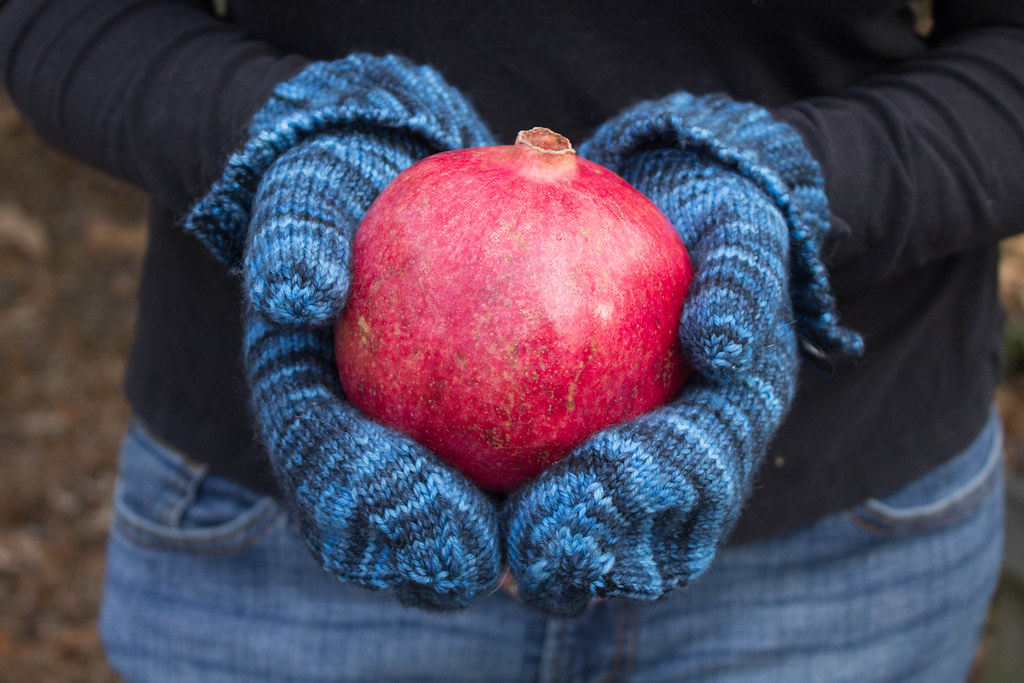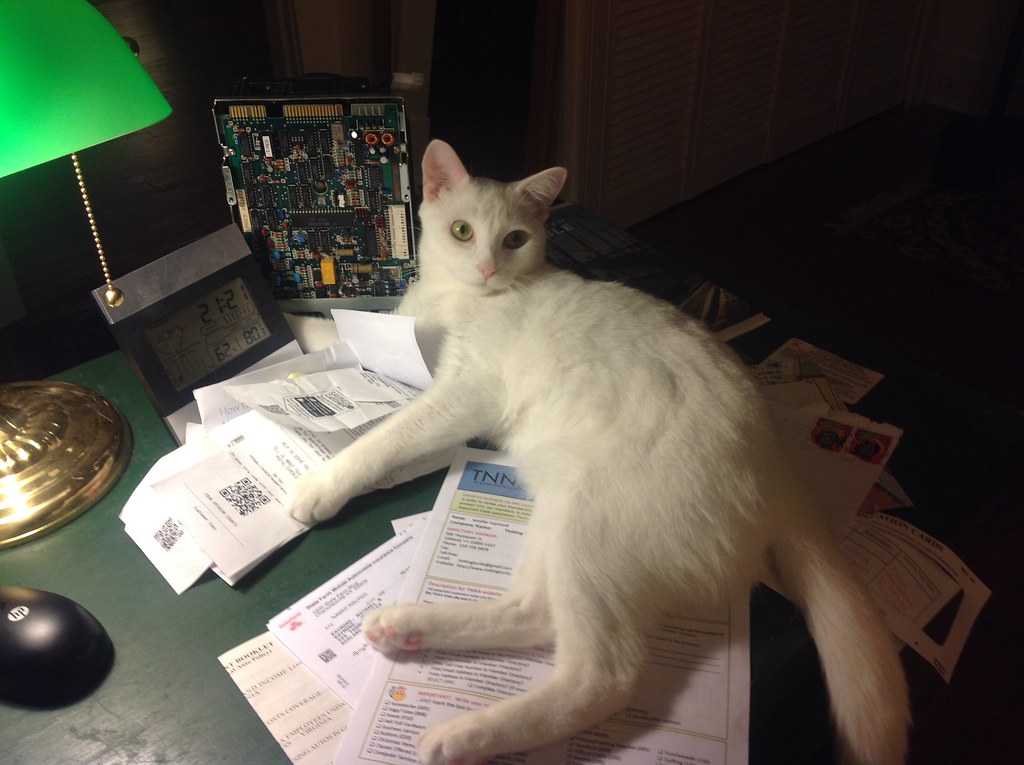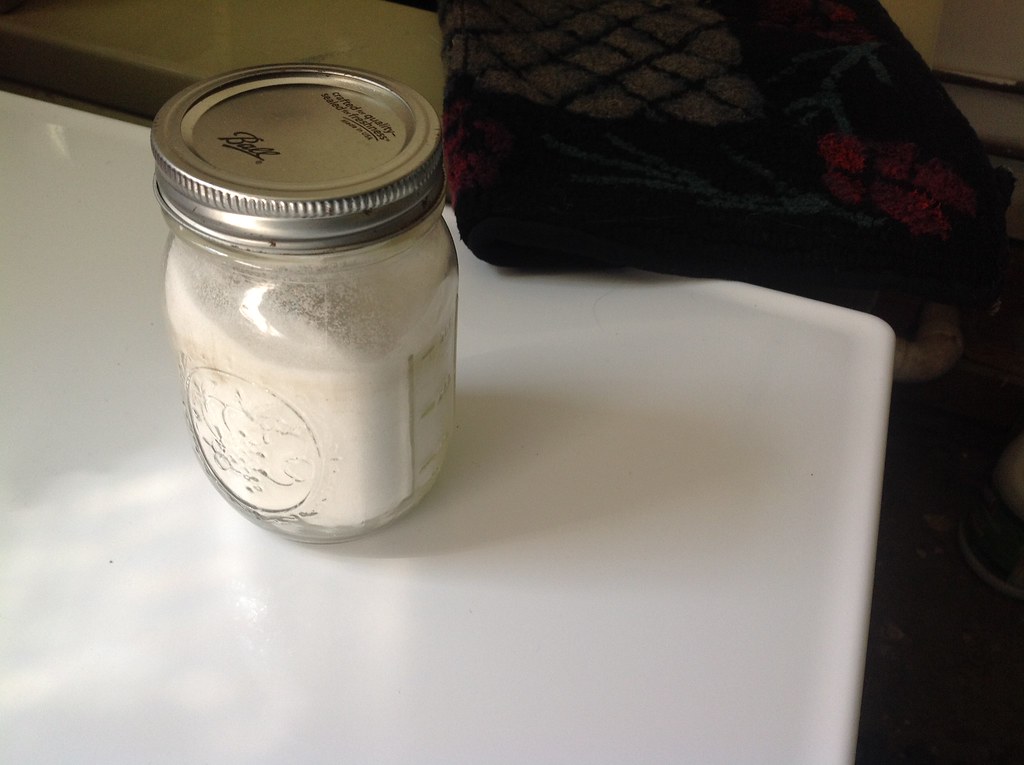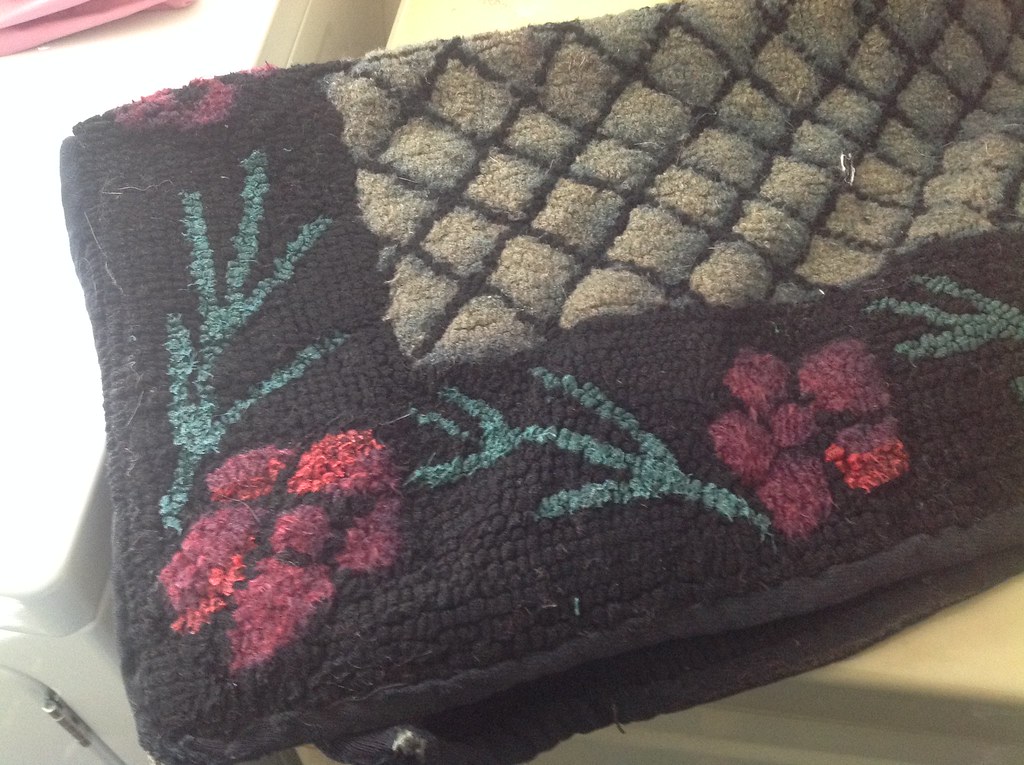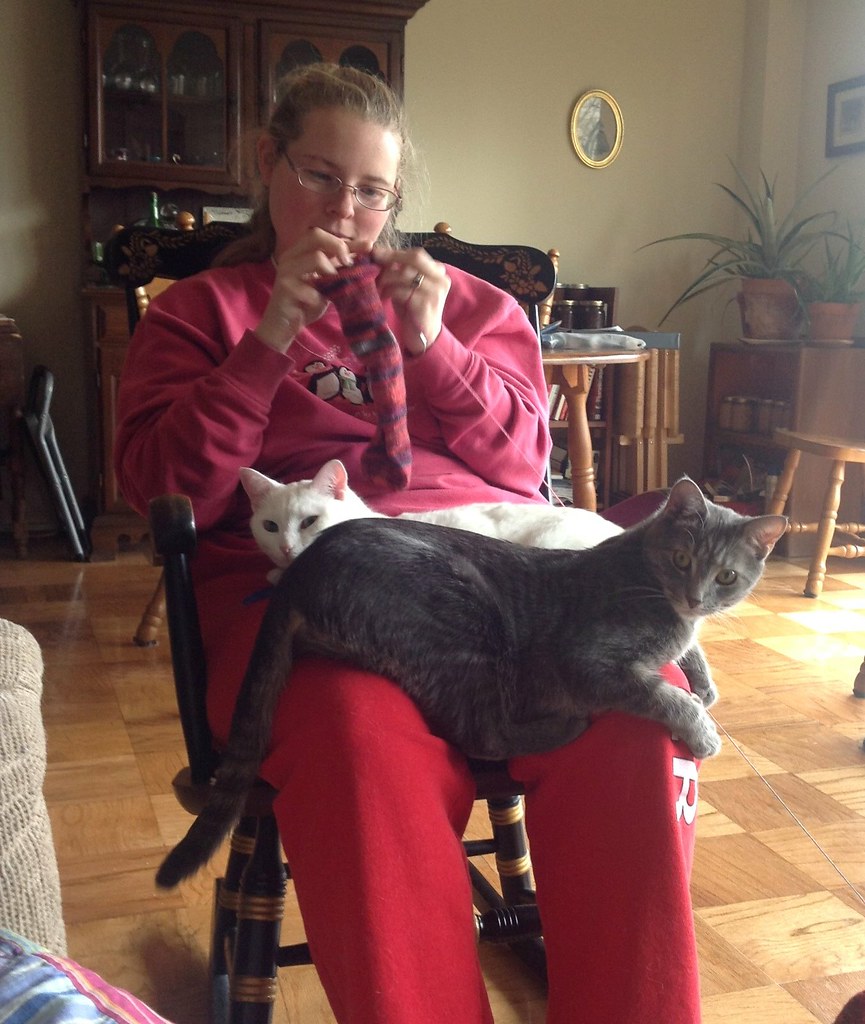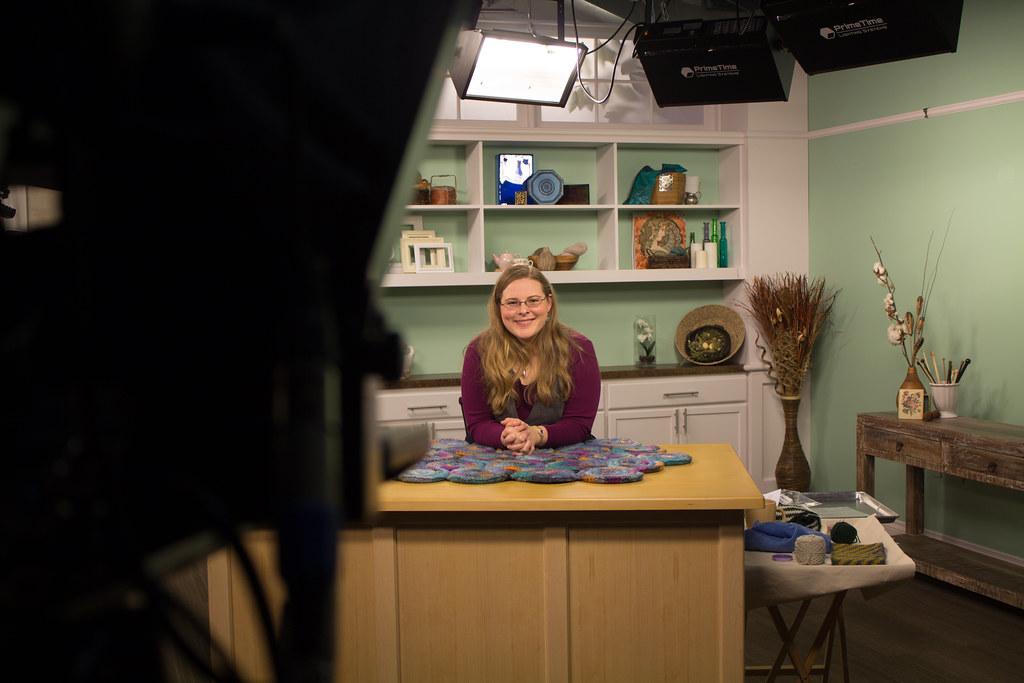
I wanted to talk a little bit more about the process of filming with Interweave, since I’ve gotten a fair amount of questions about it.
One of the biggest questions I got was: how did you manage to film four classes in two days?
First, Interweave’s got a great team that make the filming process smooth and intuitive. They were a huge help in making sure everything went smoothly. Having worked backstage more than once, I have a little bit of an idea of what goes on to prepare for a shoot. The second biggest thing that makes a difference when filming the classes is the preparation I did before we even began filming.
When I began packing for CO, all of my clothes went into my checked luggage. The luggage I carried with me, and refused to surrender? Was filled with something called “step-outs.”
What are step-outs, you might ask? Think of nearly any cooking show you’ve ever seen. That moment, when the host puts an uncooked cake in the oven, and the next moment pulls out the finished product? I bet you wouldn’t be surprised to find out that the entire filming crew isn’t waiting around for the cake to bake. The host, team, or someone has baked a cake beforehand, to enable the host to go onto the next step.
When preparing for the filming, I did something similar.
The last two weeks have been a flurry of working the same project over and over, each time working one “step” further. When we’re filming, I simply grab the project that’s on the next step, allowing me to skip ahead. Each of these unfinished projects is called a step-out, and they’re an important part of making a film class run smoothly.
Different people manage their step outs different ways. Each of mine went into a separate plastic bag, labeled with it’s order, and with a few different “hints” to remind me why I created the step out, and what it was supposed to be used for. They then all went on a tray, where I could grab them in between takes.
In other news, I’m adding a LYS to my teaching roster: Untangled Purls, in Fredericksburg, VA. I’ve added the class offerings to my calendar – take a look.
Finally, I’ve been working the last few months with the Cultivar Design team to create a new Tinking Turtle website. It was time, and I’ve been saving up for this endeavor for a while. In the next couple of weeks you’ll be hearing and seeing some changes – and hopefully the result being a website where you can find out what you need a little bit faster.
One of the things I’m looking forward to is an updated calendar, which I’m absolutely excited and thrilled to have… since the google calendar I use now does the job, but not elegantly, and it’s really hard to add pictures. You should, with the new calendar, be able to be able to see where classes are located a little bit better.




